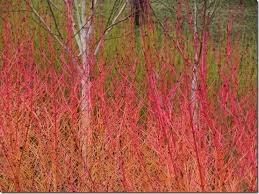
A mass of winter stems
Colour in the garden can be created in many ways and although flowers are the most obvious, foliage and even stems can produce dramatic effects. None more so, than in the winter garden with thundery skies and low sun. The coppiced new growth of a number of shrubs can be truly striking. Here are just a few suggestions to wet you appetite.
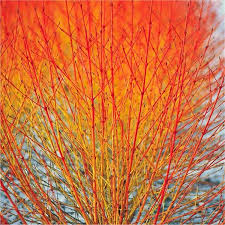
Cornus sanguinea ‘Midwinter Fire’
C. sanguinea ‘Midwinter Fire’: This variety of the native cornus, really packs a punch, the stems do produce a flame effect, with the lower section in rich shinning orange giving way to yellow tips of the younger growth, planted on mass with an evergreen back drop, this shrub sings out on a winter day.
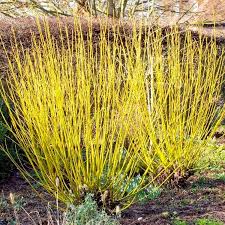
Cornus sericea ‘Flarivamea’
C. sericea ‘Flariramea’: One of the best ‘yellow’ dog woods, this creeping shrub produces dense thickets of coppiced green-yellow stems, looking dramatic in the winter light.
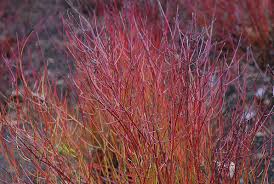
Cornus sericea ‘Kelseyi’
C. sericea ‘Kelseyi’: This variety is a good selection for the smaller garden growing to 45/60cm tall, it has golden stems, as with all cornus the new growth gives the best colour.
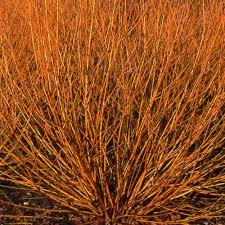
Salix alba ‘Golden Ness’
Salix alba ‘Golden Ness’: A vigorous grower makes dense clumps of coppiced stems up to 1.4/2m tall a rich golden colour, a wonderful contrast with groups of other colour stems like C. singuinea. Coppice regularly for best colour and to keep in check.
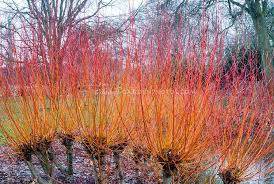
Salix alba ‘Yelverton’
S. alba ‘ Yelverton’: This is the brightest pure orange of the salix, to grow as a winter stem, as with all Salix it is vigorous and if you don’t want a tree in the middle of the flower bed keep on top of your coppicing.
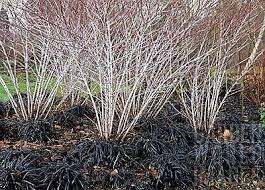
Rubus thibetanus
Rubus thibetanus ‘Sliver Fern’: It is a bit of a wild card, growing a black berry as a plant in a boarder rather than for fruit, will have most gardeners running to the hills with fright. But if you have the space and you are good at keeping on top of your garden maintenance then this is a truly striking plant. Tall arching stems 1.5m or taller, produced in dense suckering thickets. The stems are a beautiful dark blue/black with a white bloom and look truly dramatic when added to the rest of a winter stem garden. They look particularly good when under planted with winter flowering Ericas of hellebores. Cut out old stems in early spring and reduce the clump by ta 1/3, every April/ May to keep things under control, also reduce the length of stems in July/August.
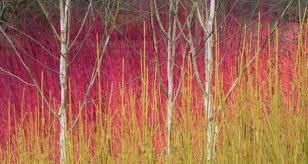
Colourful winter stems
The trick to growing winter stems for best colour is to have a strict coppicing system in place. This is for the Cornus and Salix. All the best colour is on new growth. There are two schools of thoughts about how to deal with this. 1) is you cut all the stems on every plant down to 200mm above ground level at the beginning of March. Or you selectively prune. 2) If you have the room to have a massive area of stems then perhaps cut one 1/3 of your plants down as above one year and then the other 2 areas over the next two years. 3) If you have a small garden and you only have one or 2 plants of each variety then consider dividing the plant into 3 and prune over a number of years as per point 2.

Winter stem planting
Remember when positioning colour stems the best results are had when having the morning or evening sun shinning on the stems. Or decide to have an evergreen back drop to the groups of stems so the colours glow and can be truly appreciated.
If you would like help producing a winter boarder call Emily 01273 470753.
